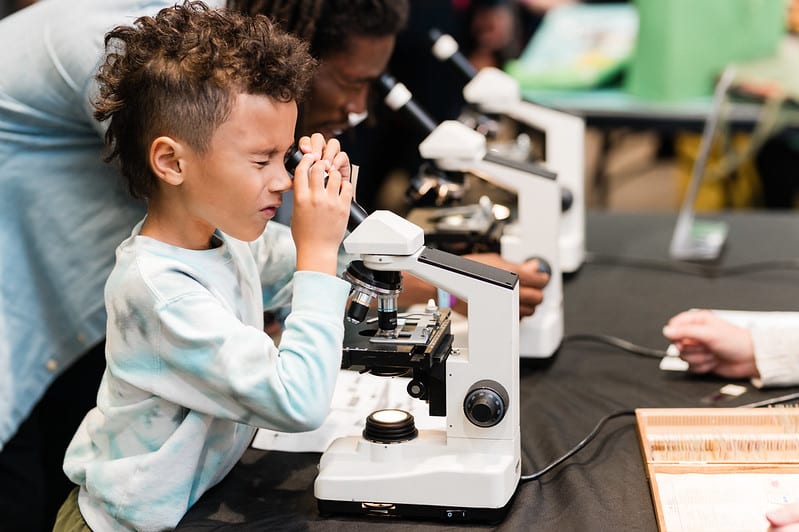Co-Creating a New Sustainable Fishing Innovation Station
Over three billion people around the world rely on seafood for their main source of protein, but harmful fishing practices threaten the future of fish populations. In Sustainable Fishing, the newest Innovation Station experience in OMSI’s Turbine Hall, learn how Oregon is a global leader in sustainable fishing practices as you come up with new uses for discarded fishing gear, make sustainable seafood choices at the grocery store, and create a device to prevent fish from getting caught in shrimp trawl nets.
Interactive, Hands-On Learning
In the Sustainable Fishing exhibit, visitors can:
- Try your hand at catching shrimp while avoiding fish species
- Handle a real fishing net from a local crab fishing vessel
- Watch entertaining videos by the teens who co-developed the exhibit
- Buy fish at a pretend grocery store seafood counter to practice supporting sustainable fishing
- Learn how Oregon’s fisheries are using sustainable fishing practices from scientists, fishers, and policymakers
- And more!
Born From Collaboration
The Sustainable Fishing exhibit is the latest design challenge to be installed in one of the Turbine Hall’s Innovation Stations. The theme is based on Goal 14, Life Below Water, from the UN Global Goals list. This exhibition was co-developed with a team of female and gender-expansive teens in summer 2022, who decided on the theme, conducted research, and created a series of short videos.
The team also collaborated with scientists, fishers, and policymakers to include the progressive measures Oregon’s fisheries have made to ensure their practices are sustainable.
Making Choices at the Store
What is the Making Choices at the Store activity, and how was it made? The Making Choices at the Store activity demonstrates how individual choices at a grocery store can make a difference in supporting sustainable fishing. Guests can choose different types of fish to buy at a pretend grocery store and see which are the most environmentally sustainable and which may be overfished or farmed in ways that hurt the environment.
To classify different fish as “great choice,” “okay,” and “avoid” at the grocery store, our education team referenced the Seafood Watch program, run by the Monterey Bay Aquarium. The aquarium’s scientists evaluated different fisheries and farms to see how well they met the program’s standards in order to rate them in terms of sustainability.
It is important to note that while the terms and choices have been simplified for the exhibit, any single fishery’s status can change due to a variety of factors, including the changing health of a particular species or evolving fishing practices. To learn about how local fisheries are prioritizing sustainability, visit the Oregon Crab Commission or the Oregon Department of Fish and Wildlife’s Fish Division.
This exhibit was funded by grants from the Marie Lamfrom Charitable Foundation and Genentech.
